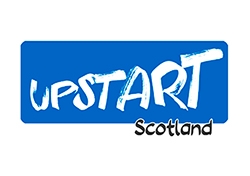by Diane Delaney
 As a parent, my child’s health and wellbeing is a priority for me, as I believe it is for most parents. Everyone wants their family to be happy and healthy, it’s the ultimate wish – isn’t it? I write this blog with multiple hats on. I’m a co-founder of the Give Them Time (GTT) Campaign and I am actively involved in speaking to and supporting parents as well as working alongside professionals in health, primary education, early years, and social care.
As a parent, my child’s health and wellbeing is a priority for me, as I believe it is for most parents. Everyone wants their family to be happy and healthy, it’s the ultimate wish – isn’t it? I write this blog with multiple hats on. I’m a co-founder of the Give Them Time (GTT) Campaign and I am actively involved in speaking to and supporting parents as well as working alongside professionals in health, primary education, early years, and social care.
My professional career has also involved working directly with families spanning a twenty-five year period. I am also a parent who is one of the statistics from our campaign, where my local authority didn’t want to speak to me, hear my views or assessment in seeking funding to defer my child. Someone whom neither I nor my child had met told me that my child’s needs would be best met in P1 at four years old. This is despite everyone else agreeing with me that deferral was the best action that I could take to support their development, giving time to play and learn in an environment most conducive to their needs.
I was unsuccessful in accessing discretionary deferral funding for my child despite my child having experienced trauma because of difficulties during birth and the first year of their life. No-one ever had a conversation with me about my concerns, my assessment and how my child was coping. The decision makers didn’t seem to care about my concerns about my child’s emotional health and wellbeing. They certainly didn’t care enough to make any direct contact with me to discuss my application. Given my experience up until this point, as a family we really didn’t need any more barriers, judgement and unsupportive practitioners, leaders, and organisations on the pathway that I was on in trying to get it right for my child.
Parents’ concerns and bureaucratic misinformation
The Give Them Time (GTT) campaign have spoken openly via our social media platforms about the experiences of parents who are involved in our campaign. Many parents come to us for advice and support because they had been given misinformation or had their parental concerns about their child’s health and wellbeing dismissed (and still do).
Our survey to parents at the start of the campaign made clear that the most common reasons for parents considering deferral related to their child’s emotional health and wellbeing. The advice, messaging and support offered by professionals (whom many parents deem to be experts in their sector) needs to be balanced, accurate and non-judgemental. However, parents and campaigners have experienced – at every level from Director of Education to senior officers, welfare officers, to front line ELC practitioners and managers – negative, unsupportive, and sometimes nonsensical advice.
At its worst, a welfare officer advised a parent who was also a teacher that school could NEVER be the cause of trauma, This was despite this parent having direct experience of her four-year-old suffering from trauma because of not coping with the transition to primary school. Parents have also been threatened with social work referrals and, on a few occasions, accusations have been levelled about their mental health.
This misinformation about which parents have told us mostly comes from local authorities but on occasion it also occurs within other sectors, including health and social care. Parents (and those working in education) are frustrated and fed up at the apparent lack of understanding, not only about child development but the wider factors that can have an impact on child development, or a child’s health and wellbeing, thus affecting the child’s ability to learn and even play and have fun.
What the ‘experts’ say
Our children’s happiness, mental health, and quality of life is the most important priority to us. However, the experience of parents involved in GTT’s work is that there appears to be a strange but very concerning issue in Scotland (perhaps elsewhere too) where professionals do not consistently consider emotional and mental health concerns from parents about their child at pre-school stage (age four or five) to be a priority. Many parents received unhelpful responses from professionals across and within sectors about parental concerns for their child starting school at 4yrs, e.g:
Don’t’ worry they will survive
They will get there in the end
You are over-worrying
You’re being overprotective
You are not hard enough on them
You are too soft
You’re too emotional
You don’t understand that schools are different now
A bit of hard work will sort them out
A bit of structure and formality won’t do them any harm
They’ve got it too easy
All children are like this
We don’t see that here
Your child never does that with us
Don’t compare your children
They will be bored in nursery
School will be good for them; it will sort them out
Parents want their children to thrive, not just survive
These responses are given whilst completely dismissing the information that the parent has just conveyed about their child’s needs. We know because frontline ELC professionals tell us, and Freedom of Information requests reveal, that some Local Authorities actively seek to reject deferral or to make it difficult for parents to meet the subjective criteria to access discretionary deferral funding.
Thankfully, the barriers to accessing funding and ELC places for another year for four-year-olds will be removed from August 2023, but there needs to be far greater and quicker action to address the major gap in knowledge, understanding and priorities linked to child health, wellbeing, and development not just within local authorities, but all sectors working with children and families. To do this, those in power need to recognise the importance of taking this action and leading from the top, changing policies and using evidence to inform modern day practice and meet the needs of children and families in today’s society.




